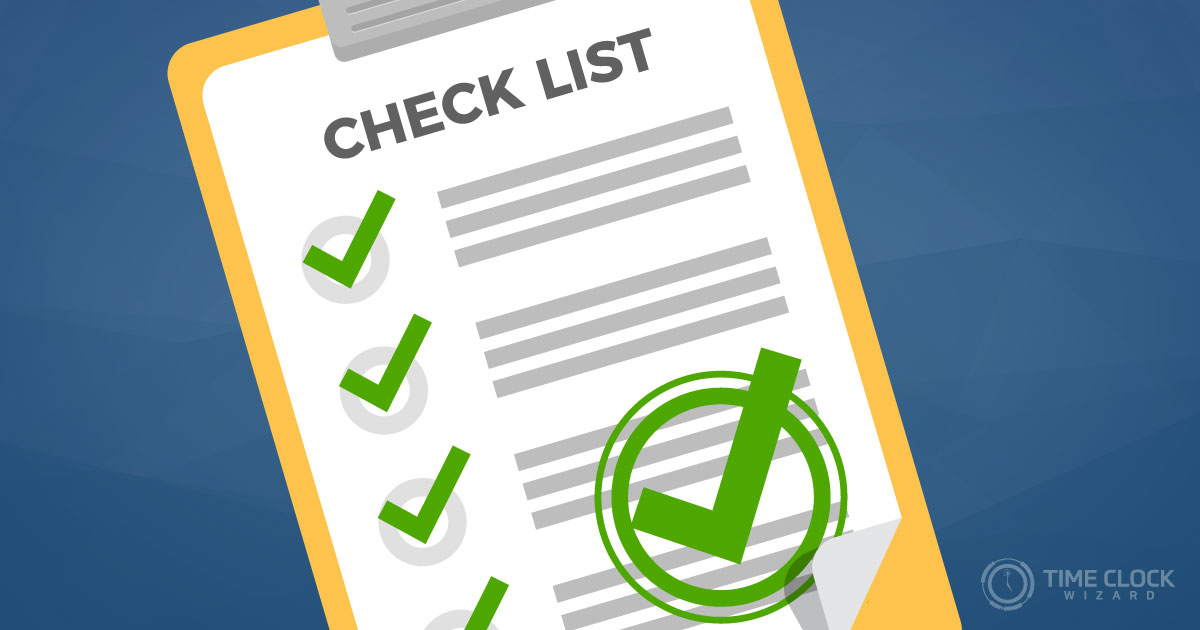
Incorrectly onboarding new employees is unfortunate, since it can potentially affect the rest of their time in the position. Welcoming a new employee is an opportunity to build a meaningful, even powerful, relationship with a new hire that will ultimately strengthen your entire business operations.
There is much more than just team-building or cheer-leading during the employee onboarding process . When a new employee accepts a job offer, the Human Resources (HR) department and hiring manager should, as a matter of company policy, leap into action. Why? The perfect time to reinforce an important message would be while onboarding new employees. The message, through actions and not just words, should sound like this:
| Dear New Employee, You are now part of a culture that thrives on open, clear communication, excellence and efficiency. In welcoming you, we are demonstrating our communication, excellence and efficiency, and hope to build a mutual relationship of trust, respect and appreciation. The goal of this is not just to win your loyalty, but to convey the kind of attentiveness that should be extended to all employees and, most importantly, all clients. |
Onboarding Best Practices
To demonstrate expectations from a new employee, management needs to lead and execute efficiently – by example. Based on an article from the Software Advice blog, find a detailed new hire checklist of onboard best practices below:
- Appointment letter. Not all companies send this letter—which usually just confirms the appointment, job title and start date. But if you do, mail it out as soon as a new hire accepts a job.
- Welcome email. A new hire should receive an email welcoming and congratulating them within days of accepting the job. This brie email should inquire if the employee has any special needs or concerns. It should also introduce a point of contact or two—the hiring manager and an HR representative responsible for onboarding. End this note by saying a follow-up email about the first day of work will be forthcoming.
- Follow-up email. This communication should provide first-day information for the new employee—where to go and, if necessary, how to get there; when to get there and the name of a point of contact. If there are paperwork or ID requirements that need be addressed, such as Employee Eligibility or ID Verification, make that clear and specify what documents will be needed.
- Work behind the scenes. A new employee’s arrival usually means coordinating with operations or support staff to ensure a designated workspace— with necessary furniture, supplies, nameplate and phone— is ready before the employee arrives. As for a computer, the IT department should install any special software related to the new hire’s job and have the workstation ready to go.
- Be transparent. You know what’s one of the “worst practices?” Not telling existing staff about a new hire. When a mystery employee shows up unannounced, the manager is sending a message to the team: you are not in the loop. That is not the kind of communication anybody wants; it’s demeaning and disrespectful. So be transparent and tell staff the team is growing. If it comes up in a meeting, great. But an email to team members is the minimum courtesy that should be extended.
- The arrival. When the employee arrives, a scripted, choreographed, planned process should unfold. The manager should be on hand to greet the newcomer and introduce the employee to the work site and their new workspace. There, everything should be ready to go—working phone, supplies and a computer. Just having a computer isn’t the end of the story; an IT staffer should be on hand to educate the new hire on any company policy and demonstrate how to use equipment and any intranet portals.
- Support systems. Some companies conduct benefits meetings—schedule this as soon as possible. Health insurance is a major concern for many employees, and getting that out of the way will create a better environment to focus on work. Companies without benefits meetings—there are many—will want to have new employee packets at the ready. These are the documents that come with every new job: insurance plan information and sign-up forms, tax deduction forms, retirement plans, business card request forms—as well as phone lists, department directories, databases, and organizational charts.
- Code of conduct. One document that needs to be in the packet—and stressed to the new hire—is the company’s code of conduct Policy. Don’t assume in the era of increased #MeToo awareness that employees are completely sensitive for the evolving paradigms of appropriate behavior. Don’t have one? Here’s a checklist inside the checklist for standard
Compliance & Protocol Of Employee Onboarding
A standardized employee onboarding process should be implemented so all hiring managers and members of the Human Resources department can ensure they are following best practices for communication, compliance and protocol.
Communication and inclusion are big factors when it comes to employee satisfaction—most people like to feel like they are part of a team. So take the employee on an office tour and introduce them to the new team and other people in the office. Then the manager should send out an introductory email, welcoming the new addition to the team and encouraging others to stop by and say hello. These suggestions aren’t just calculated positive psychology—there just good manners. Speaking of good manners, managers with expense accounts should take the team out for a get-to-know-you lunch.
The first week: preferably in the early hours of the first work day—the manager should meet with the recruit and map out expectations for the first week. Assign time for employee training, if that’s in the cards, and becoming familiar with the environment and new processes. Managers should set goals right away—easy ones, like getting HR issues squared away, allotting hours for the newcomer to just explore the team’s previous work and the company at large. And toss in an assignment too – have them draw up a list of questions about the job, the company and the marketplace.
- Comply with local, state and federal law
- Protect company property—not just physical property, but intellectual property and knowledge of the company’s business initiatives
- Avoid conflicts of interest
- Co-workers must be treated in a respectful way.
- To eliminate the potential specter of sexual harassment, romantic liaisons between management and staff are not allowed.
- Failure to adhere to the above requirements of the code of conduct may result in disciplinary action. Those who repeatedly or intentionally violate the code of conduct may face reprimand, suspension, demotion, loss of benefits or compensation, or termination.
- Employees charged with theft, embezzlement, sexual harassment and other unlawful behavior may be subject to legal action.
Rev-Up the feedback loop: after your new staffer gets through his first week, HR and the employee manager should as for feedback. What was helpful? What could have been done better? Companies that don’t ask for evaluations will never know how they are doing and how they can do better! Asking for feedback also underscores one of the goals of stellar onboarding, by once again putting the company’s commitment to communication and collaboration into action.
New Hire Checklist: Remote Workers
Bringing new employees who work remotely into the corporate fold is both easier and harder than onboarding new employees an office. Yes, there should be welcoming emails. But there’s less pressure on IT beyond email account creation and permissions for any propriety software a company uses.
As for managers and operations staff stressing about a new remote worker’s arrival, again there is less pressure. With workers operating out of different time zones, starting time is generally a loose concept for remote workers So there is no rush for either the employee or the manager to synchronize watches and log on to the collaborative platform at the same time.
The main requirement, however, for remote onboarding are detailed, prioritized email instructions that are sent to the newbie before he’s ready to log on to work. That is the absolute required minimum. Nobody has to give office tours, or make introductory chatter or book a meet-and-greet “lunch for the newbie.” And important documents, like worker eligibility or insurance selections, can be done in their own good time, then scanned and emailed back to the main office.
But just because distance has eliminated easy, “typical office” communication doesn’t mean you get to ignore new recruits. In a way, you have to work harder.
A friendly exchange with a colleague on the way to lunch may seem simple; it isn’t. It’s packed with information: a few words, a smile, a laugh a style of dress—these are all data points that impact on how we relate to each other. Using a business collaborative portal, you have to work harder at communicating. It’s a commitment and it also runs the risk of being slightly intrusive. Talking when you share a common space is natural. Pinging someone you don’t really know on the platform requires pro-active behavior.
Managers and HR representatives have every right to be proactive and friendly. And they should be. Many of the rules of onboarding should still apply to remote workers. Creating a culture that values communication, excellence and efficiency, is still the goal, and there are ways to promote this while onboarding new employees. On a basic level, it could be frequent check-ins with the new recruit via email and text. Just asking questions about a project or sharing tips about using the platform promote communication.
As for integrating the recruit into the team, a manager of remote employees can’t take the staff to lunch, but he or she can organize a weekly video conference. This lets the team interact in real time with each other, put faces and voices to names, and adds a human element to a virtual environment.
Finally, and pmost importantly, a manager must be a frequent presence on a collaborative platform’s group chat, ideally acting like a level-headed, responsible, empathetic masters of ceremonies; someone who keeps everyone loose, engaged and communicating—with new and veteran workers. Engaging with staff keeps employees engaged, and that is a fundamental requirement for managing a team.






